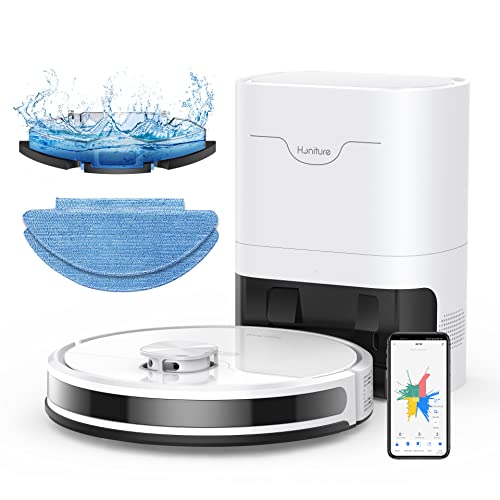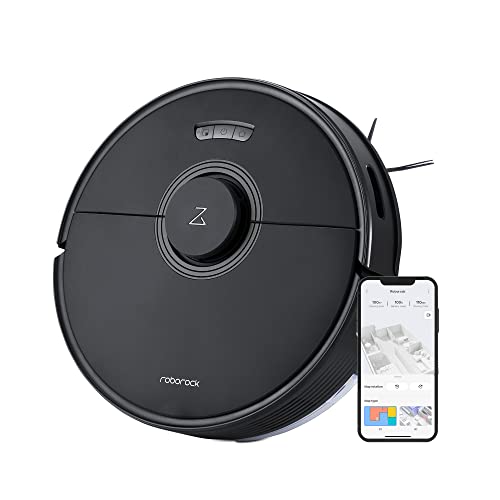Your Family Will Be Thankful For Getting This Robot Vacuums With Lidar
페이지 정보
작성자 Chris 작성일24-03-28 00:29 조회10회 댓글0건관련링크
본문
 Robot Vacuums With Lidar Make Cleaning Easier
Robot Vacuums With Lidar Make Cleaning EasierA robot vacuum will analyze its surroundings to avoid obstacles and navigate efficiently. This technology is similar to that utilized in self-driving vehicles as well as aerospace.
 Simple robots come with bump sensors to prevent them from scuffing up your paint or scratching chair legs, but more sophisticated navigation systems like Lidar and SLAM are better at avoiding unexpected. This technology is costly.
Simple robots come with bump sensors to prevent them from scuffing up your paint or scratching chair legs, but more sophisticated navigation systems like Lidar and SLAM are better at avoiding unexpected. This technology is costly.lidar Navigation Robot Vacuum
Lidar, or light detection range has been the most significant advancement in robot vacuums over the last decade. Lidar is a sensor which emits laser beams and tracks the time it takes for them to return. The data can then be used to map accurately. Lidar makes it much easier for robots to navigate and avoid objects particularly in dim lighting.
Even though most modern robotic vacuums have some form of obstacle-detection, they still struggle to untangle socks, cords and other household items that easily get caught on the floor. A weak obstacle detection system could seriously hinder the cleaning capabilities of the robot vacuum and cause a lot of wasted time. You'll have to stop it and manually untangle whatever object it is stuck on.
The top robotic vacuums that use lidar have powerful object detection abilities that ensure your floors remain clean and free from debris and tangles. They are also less likely to be stuck on furniture legs or other obstacles that are common in narrow hallways and narrow spaces.
Some robots with lidar navigation feature digital keep-out zones, which allows you to create a virtual line in the map that prevents your robots from cleaning specific areas of your apartment or home. This can be very helpful in preventing your vac from accidentally vacuuming up the expensive area rug or the cat litter box.
A robot equipped with lidar could also recognize stairs. While getting a robot to climb steps isn't easy -- save for a few pre-production prototypes -the majority of models equipped with lidar are able to make it up and down the steps with no problems.
Other sensors you might want to keep an eye on include infrared sensors that can detect walls, furniture and other objects to aid the robot navigate; 3D ToF sensor which uses reflective infrared to identify and calculate the position of objects and cliff sensors that warn the vacuum when it gets close to an edge.
Gyroscopes
In contrast to lidar, which employs lasers to scan the space and map it out, gyroscopes rely on rotation sensors that keep the robot from hitting things. They are more prevalent in robots that are budget-friendly and work as a quick-spinning wheel that lets the vacuum know where it is in relation to obstacles. Certain models can also use Gyroscopes to make an initial home map, which is helpful to keep track of your space and cleaning more thoroughly.
SLAM (Simultaneous Localization and Mapping) is another well-known navigation system for robot vacuums. It is available at various price points. This technique is used to create a 3D image of your room to allow the robot to create a precise map and navigate around it in a rational manner. This is a major improvement over the bounce-and-bang machines of the past that would simply move through your room, bouncing off everything they came across until the job was done.
In addition to creating maps, the majority of robots who use SLAM can display them in an app so you can track where your cleaner is at any time. You can also set no-go zones as well as other settings based upon the maps. This is especially helpful for homes with lots of furniture, as it isn't easy to figure out what's where without a map of your home.
While SLAM is effective in a majority of situations, it's not so good in detecting smaller obstacles, like wires or cables that might be trapped in the vacuum's brush. This is a serious flaw, since many robots tend to take on these objects and harm them.
Luckily, the majority of robots that use SLAM have obstacle detection technology, such as drop detectors. These sensors stop the vacuum from falling down stairs, or any other huge differences in flooring levels that could cause severe damage. The majority of robots have cliff sensors as well, which are useful in the event you have a pet who would like to leap over it to reach its food bowl or water. These sensors are typically located on the vac's bumpers and emit signals when the vac is within range of anything that could hurt it.
Wall Sensors
The ability of a robotic vacuum to navigate around your home is based on a combination of sensors. Budget models may use bump sensors and lidar navigation robot vacuum a rotating light to detect obstacles. However, models with higher-end features have mapping, self navigation systems that save maps (some retain or forward this information to a company), and digital keep-out areas to ensure that robots aren't knocking furniture legs or pinging cables.
Some robots use what's called SLAM, or simultaneous mapping and localization. They will map the room before they begin cleaning and then refer to the map throughout the entire process. This helps them be more efficient since they won't have to repeat sections of the room and also know exactly where they've been. These maps can be shared and viewed in the robot's application. This is beneficial if you want to set the areas to be cleaned or areas that are not allowed to be used.
The other major navigation sensor you'll want to look for is the gyroscope. Gyroscopes rely on spinning wheels or a swiftly-rotating beam of light to calculate the distance between your robot and obstacles in your home, using this information to create a virtual map that the robot can refer to when it moves through your space. Without this technology, robots may get caught up in things like cords and rugs and tend to zig-zag along the floor, rather than following the edges of rooms.
The most advanced robots are equipped with a variety of obstacle avoidance techniques, such as 3D structured lights, 3D Time of Flight (ToF), bi-cular or monocular vision and LiDAR. The more technologically advanced, the more precise and intuitive your robot's navigation will be. This means that your robot can clean more thoroughly and require less effort and you can establish zones where it is not permitted to go to safeguard electronics and other valuables. The newest generation of gyroscopes, which are more precise and perform well in low light, can even detect a change in the ambient lighting in your home to aid the robot see more effectively.
Sensors Optic
A robot vacuum equipped with lidar will create a 3D map to help you navigate the space more efficiently and avoid hitting obstacles. It accomplishes this by sending out a laser beam that bounces off surfaces before returning to the sensor. The sensor then determines the time it takes for the beam to return, which is translated into distance measurements and allows the robot to create a picture of your room's layout.
Lidar is more efficient and precise than cameras, which a few robots use to map rooms. Depending on the model, a robotics device with lidar could come with the "no-go" zone feature that allows you to create areas that are off-limits for your robot. In our testing it was the Neato Botvac D8 or iRobot Braava 450 were the two best models that use this technology. They have an application that lets you easily set up "no-go zones".
iRobot Duo+, another great option, uses sensors and LiDAR to create an precise map of your home that it can use to navigate. The app also lets you control the mapping process so that you can refine your home's boundaries should you need to.
Other technologies used to improve the navigation of robots include 3D structured lights, which measure distances by detecting objects' reflective properties, and 3D TOF (time-of-flight), which analyzes an area to determine the speed of light reflections and their direction. Certain robots also employ binocular and monocular vision to recognize objects and avoid them.
All of these sensors work to allow the robots to stay clear of obstacles in a variety of ways and this is the main reason the reason why these machines are so useful to have. It is important to think about your needs prior to buying an automatic vacuum. Consider how much time it will take you to clean your floors, the number of obstacles that you have in your home and whether you would like your robot to be able to do more. We recommend that you set your budget to include an item that has all the features you need.
댓글목록
등록된 댓글이 없습니다.
